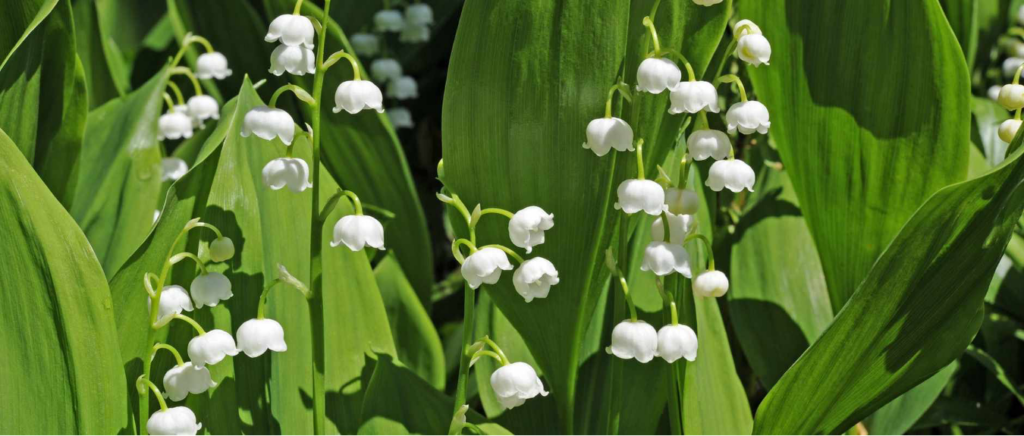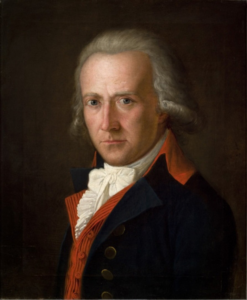Adelaide
(Poet's title: Adelaide)
Set by Schubert:
D 95
[1814]
Einsam wandelt dein Freund im Frühlingsgarten,
Mild vom lieblichen Zauberlicht umflossen,
Das durch wankende Blütenzweige zittert:
Adelaide!
In der spiegelnden Flut, im Schnee der Alpen,
In des sinkenden Tages Goldgewölke,
Im Gefilde der Sterne stralt dein Bildnis,
Adelaide!
Abendlüftchen im zarten Laube flüstern,
Silberglöckchen des Mais im Grase säuseln,
Wellen rauschen, und Nachtigallen flöten:
Adelaide!
Einst, o Wunder! entblüht, auf meinem Grabe
Eine Blume der Asche meines Herzens;
Deutlich schimmert auf jedem Purpurblättchen:
Adelaide!
Your friend is strolling alone in the spring garden,
Gently bathed in lovely magic light,
Shimmering through waving branches of blossom.
Adelaide!
In the mirroring flood, in the snow of the Alps,
In the golden clouds of the sinking day,
In the realm of the stars your picture shines out,
Adelaide!
Small evening breezes whisper in the soft foliage,
The silver bells of May rustle in the grass,
Waves splash and nightingales pipe out:
Adelaide!
There will come a time (what a miracle!), when on my grave there will blossom
A flower from the ashes of my heart.
Shimmering meaningfully on each little crimson petal will be:
Adelaide!
All translations into English that appear on this website, unless otherwise stated, are by Malcolm Wren. You are free to use them on condition that you acknowledge Malcolm Wren as the translator and schubertsong.uk as the source. Unless otherwise stated, the comments and essays that appear after the texts and translations are by Malcolm Wren and are © Copyright.
☙
Themes and images in this text:
Clouds Evening and the setting sun Floods and tides Flowers Gold Graves and burials Hearts Hills and mountains Leaves and foliage Light Magic and enchantment May Mirrors and reflections Mountains and cliffs Names Nightingales, Philomel Pictures and paintings Silver Snow Spring (season) Stars Surface of the water Walking and wandering Warbling (flöten) Waves – Welle Wind
Everything is carefully balanced here. The first stanza stresses movement: the speaker is strolling through a garden, transformed by magical light and the branches of blossom are swaying. In the last stanza things are still and rooted. The speaker is in the grave and the single flower that bears witness to his love emerges unbending from what is left of his heart. In stanza two it is the image of Adelaide that is reflected in the waters and glows everywhere on earth and heaven, but in stanza three it is her name that resounds throughout nature, animate and inanimate. Other polarities reinforce this effect: it is the same in the present (stanza 1) and in the future (stanza 4), whether water is flowing (the mirroring flood, splashing waves) or frozen (the snows of the Alps), on earth or in the sky, whether it be silver (‘the little silver bells of May’, which are presumably lily of the valley) or gold (the golden clouds of sunset), all the elements proclaim and reflect Adelaide.

https://www.gardensillustrated.com/plants/convallaria-majalis-lily-of-the-valley-how-grow/
How odd, then, that Adelaide herself seems to be totally absent despite this proclaimed ubiquity. From the beginning, we know that the speaker is alone (should we perhaps translate ‘einsam’ as ‘lonely’ or is he just ‘on his own’?). We have no idea if Adelaide is even aware of his existence, let alone his love. She may well be totally beyond his reach (the word ‘adel’ means ‘noble’, so the name ‘Adelaide’ might suggest that she is unattainable to those outside her class). She could even be dead and he might be describing the experience of grief. In any event, Adelaide herself with her own defining qualities and personality is not present in the text. The poem is all about her image and her name. The name is heard in the sounds of breezes, flowers, lapping water and birdsong and is echoed in the foliage and grass. Her image shines out in the landscape and in the sky, it is reflected in the water. Yet we know nothing of her in herself. All that we encounter is the world as it appears to the writer. It is his world that we presented with. It is a text about his obsession. This may be a result of loss, grief or plain delusion, but the effect is the same: the Adelaide of the poem is his construct and may be nothing to do with Adelaide herself.
So, despite the polarities and balance that are basic to the structure of the poem this is not a text about a relationship between two people. We only get to know one of them: the anonymous writer who avoids the word ‘I’ and only uses the possessive adjective ‘my’ to refer to his grave and his dead body. The word ‘ein’ (one) appears at crucial points to reinforce this effect of monomania. He is ‘einsam’ (alone / lonely / lonesome / on his own) and at the beginning of stanza 4 he envisages what will happen ‘one day’ (einst) after he has died. A single flower (‘eine Blume’) will emerge from what remains of his heart and will bear the single name Adelaide on each of its petals.
This single flower recapitulates the images in stanzas 2 and 3. Just as her image glows out of water and the sky and her name is ‘spoken’ by the little bells of lily of the valley, this single flower shimmers and resounds. It is a ringing bell and each petal is a shimmering surface so it brings together the visual and the aural in singularity of experience. Yet it is even more significant than that. It is not just shimmering, it is shimmering ‘meaningfully’ or ‘clearly’ (Deutlich schimmert). Since it has emerged from his broken heart it is obviously meaningful to him, but how can it be meaningful to us? Can it even be clear to us?
We know, though, that it is. We do know what the world looks and sounds like when we are affected by love and loss of this type. It is precisely because the real Adelaide is missing from the text that we are able to connect with it. We substitute other images and other names and that is why her name shines and resounds so clearly and meaningfully: (someone other than) Adelaide!
☙
Original Spelling Adelaide Einsam wandelt dein Freund im Frühlingsgarten, Mild vom lieblichen Zauberlicht umflossen, Das durch wankende Blüthenzweige zittert, Adelaide! In der spiegelnden Fluth, im Schnee der Alpen, In des sinkenden Tages Goldgewölke, Im Gefilde der Sterne stralt dein Bildniß, Adelaide! Abendlüftchen im zarten Laube flüstern, Silberglöckchen des Mais im Grase säuseln, Wellen rauschen und Nachtigallen flöten: Adelaide! Einst, o Wunder! entblüht, auf meinem Grabe, Eine Blume der Asche meines Herzens; Deutlich schimmert auf jedem Purpurblättchen: Adelaide!
Confirmed by Peter Rastl with Schubert’s source, Gedichte von Matthisson. Neueste verbesserte Auflage. Wien und Prag bey Franz Haas 1810. page 46; with Gedichte von Friedrich von Matthisson. Erster Theil. Tübingen, bei Cotta, 1811, page 144, and with Friedrich von Matthisson, Gedichte, fifteenth edition, Orell, Füßli, & Co., 1851, pages 94-95.
First published in Musen-Almanach für 1790, herausgegeben von Joh. Heinr. Voß, Hamburg, bei C.E.Bohn, pages 65-66.
To see an early edition of the text, go to page 46 [54 von 296] here: http://digital.onb.ac.at/OnbViewer/viewer.faces?doc=ABO_%2BZ169509602


